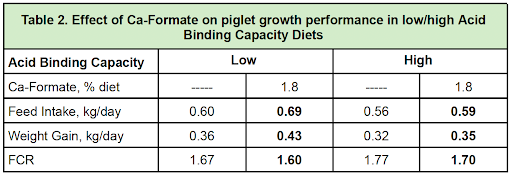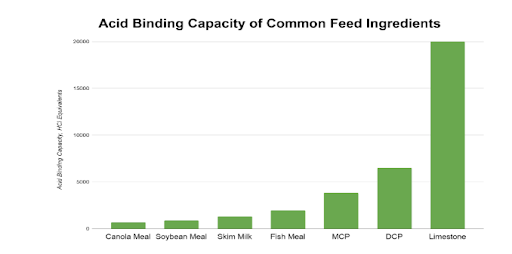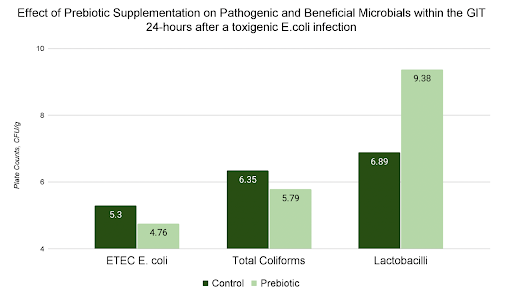Nutritional Means of Managing E.coli Infections in Young Pigs
Introduction
Despite our best efforts, E.coli continues to be an economic drag on swine production around the world. The predominant group of E.coli that presents the greatest challenge from a health and management standpoint is enterotoxigenic E.coli (ETEC), which like all E.coli, is gram-negative and fimbriated, but is unique in that strains in this category produce and secrete toxins as part of their pathogenesis. Young pigs are the most susceptible to ETEC infection with the majority of infections occurring in the first 8 weeks of life and the key symptom of infection being moderate to severe osmotic diarrhea. Historically, ETEC has been controlled through the use of antibiotics and pharmaceutical levels of zinc oxide. However, changes in legislation combined with consumer preferences has restricted these practices which has led to a resurgence of ETEC in many parts of the world. In light of this, nutritional means are now being reassessed as means of managing ETEC infection in commercial swine production. This paper will review concepts related to ingredient selection, formulation and novel feed additive technology that can be applied to nutritional programs as a means of managing E.coli infection in pigs.
Understanding E.coli
As mentioned above, E.coli is a gram-negative fimbriated bacteria. Colloquial identification is based on characterization of the fimbriae, with K88 being the most prevalent, but K99, 987P, F41 and F18 also being strains that affect swine production, albeit not nearly to the same degree. These fimbriae are responsible for binding the E.coli to specific receptors present on the cell surface of gastrointestinal enterocytes, following which configurational changes occur and toxins are secreted which enter the cell and cause pathogenicity. The key toxins that are produced are Heat Labile (LT), Heat Stabile A (STa) and B (STb), Enteroaggregative E.coli heat-stable toxin 1 (EAST1) and Shiga Toxin 2e (STx2e; produced by F18). Although subtle differences exist between the precise pathogenicity associated with each toxin (Table 1) a key similarity is that these toxins disrupt normal cation/ion transport and balance which ultimately leads to fluid accumulation within the lumen of the GIT which in turn results in the characteristic osmotic diarrhea associated with ETEC infection.

Historical Management Strategies
Low Acid Binding Diets
Maintaining optimal pH in the upper GIT is essential if the health and performance of young pigs is to be maximized. Optical pH values for the stomach and duodenum, jejunum and ileum are in the ranges of 2-3, 4-5 and 6 for each segment, respectively. Maintaining pH values in these ranges has been shown to optimize digestive function and minimize pathogen colonization. However, young pigs have a limited acid secretion capacity and endogenous acid production can easily be swamped by dietary buffers. Ingredients that are known to have high acid binding capacity are listed in figures 1a and 1b (adapted from Roth, 1999). As it can be seen, mineral ingredients such as limestone, dicalcium and monocalcium phosphate and to a lesser extent high mineral protein sources such as fishmeal and skim milk are the largest contributors to acid binding in nursery pig diets. Furthermore, it was shown that formulating piglet diets to have low acid binding and including calcium formate as an alternative calcium source resulted in an 11% improvement in FCR compared to high acid binding capacity diets without calcium formate (Table 2).

Given that acid binding is an ingredient related concern, there are a number of possible approaches that can be implemented to manage this issue. Firstly, remove or minimize the use of high acid binding ingredients, particularly limestone in nursery pig feeds. Limestone is a low-cost source of calcium, but the carbonate ion acts as an antinutrient as outlined above. Removing limestone can be achieved by offering and incorporating calcium salts such as calcium formate or calcium lactate into nursery rations which will assist in reaching dietary calcium requirements while simultaneously reducing GIT pH through direct feed acidification. In addition, fully leveraging calcium matrix values associated with dietary phytase supplementation will also reduce the need to include inorganic calcium sources. The use of in-feed and water based acidification that contain strong pH reducers such as phosphoric, lactic and/or citric acid, is also recommended as a way to take care of any excess acid binding being introduced from the feed. There are therefore a number of way by which high acid binding can be avoided in nursery pig feeds, the implementation of which will assist in reducing the likelihood and severity of ETEC infection in young pigs.

Low Protein Diets
In general, E.coli tend to be protein fermentors and thrive in environments where abundant supplies of nitrogen are present. In the case of nursery pigs, ETEC have the capability of fermenting undigested dietary protein into ammonia and ammonium, which increases luminal pH, leading to further growth of ETEC and dysbiosis. The use of low protein diets abates this problem by reducing the amount of substrate available for E.coli to use as a nitrogen source.
From a practical standpoint, it is important to rely on synthetic amino acids in order to formulate low protein diets that meet the dietary requirements of young pigs (Table 3). When feeding low protein diets formulated as such, lower E.coli counts in the GIT, reduced colonic ammonia levels and reduced diarrhea severity can all be expected (Opapeju et al., 2009).

In practice, providing low protein diets formulated with synthetic amino acids to meet minimum dietary requirements is not a new concept. In addition, highly digestible protein sources can also be included, however, one should be mindful of the acid binding capacity as mentioned previously. It is also important not to over-reduce as dietary crude protein levels below roughly 17% is the approximate point where non-essential amino acids such as proline and glycine transition into being conditionally essential and can contribute to dietary protein deficiency and impeded growth. However, it is important to re-remember that the mechanism of action underpinning this formulation strategy is critical if nutrition is to be used as means of managing E.coli infection in young pigs.

Feed Derived Prebiotics
Prebiotics are compounds that when fed or consumed lead to the growth and propagation of beneficial bacteria in the GIT which in turn leads to improved growth performance, health and immunity. More often than not, prebiotics are carbohydrates derived from food grade materials such as yeast, however a new generation of prebiotics are being developed that are derived from feedstuffs such as wheat, barley, canola and soybean meals. Yeast based prebiotics, when fed to young pigs, tend to inhibit the growth and/or bind gram negative bacteria while directly strengthening immunity through interactions with GIT tissues which leads to improved performance and enteric health. Contrast this to feed derived prebiotics which are rich in mono- and disaccharides and are a carbon source for beneficial bacteria, the establishment of which impedes the growth of pathogenic bacteria such as ETEC.

Supplementing feed derived prebiotics into nursery pig diets currently can take one of two paths. The first is to directly supply a source of carbohydrate based prebiotics that have been extracted from wheat, barley, oats or another feedstuff through the use of various bioprocessing technologies. There are currently limited options for this approach as the production of such products is limited and the technology for producing them is still burgeoning. The second approach is to generate these prebiotics in situ through the use of exogenous carbohydrase enzyme supplementation. Here, the concept is to target indigestible dietary carbohydrates (i.e. fibre) as a source of prebiotics by including such enzyme activities as xylanase, beta-glucanase, cellulase and pectinase into the diet. These enzymes will release prebiotic compounds from the feed matrix directly into the lumen of the GIT and will in turn assist in the development of a beneficial bacterial community that will in turn reduce colonization of pathogenic bacteria such as ETEC. So, in addition to the classical benefits associated with enzyme application such as improved nutrient digestibility and feed efficiency, supplementing nursery pig diets with a targeted source of carbohydrase enzymes can also impart enteric health benefits and assist in managing E.coli infection in young piglets.
Lessons to be Learned
E.coli infections can be pernicious and will likely become more frequent and problematic as countries adopt zero AGP and ZnO policies. Without these traditional management tools, nutritional strategies will be leaned upon to manage E.coli infections going into the future. However, many such strategies exist that have been scientifically evaluated and validated and have the potential to be stacked together into a single holistic nutritional program.Thus, understanding and being able to apply the concepts reviewed above will be beneficial when formulating commercial nursery pig diets.


